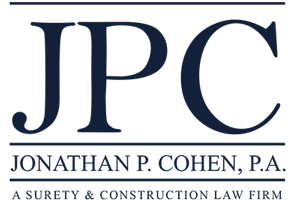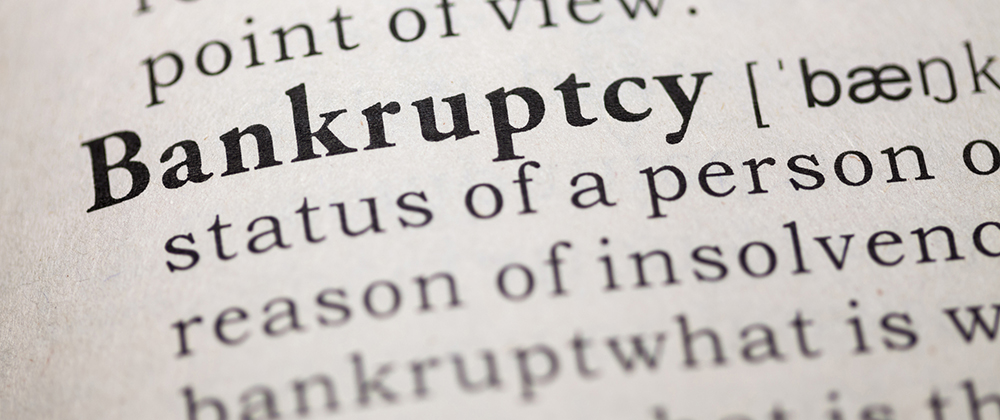Contractors and Preferential Payments
Florida construction companies contend with numerous risks. One of the risks they face when working on projects with multiple parties involved is that one might file for bankruptcy. If a party makes a payment to your company within 90 days of filing for bankruptcy, you might receive a notice from the bankruptcy trustee that the trustee intends to claw back the payment you received. Here is some information that you need to know about contractors and preferential payments from Florida construction lawyer Jonathan P. Cohen, Esq. and how you might defend against having them clawed back by the bankruptcy trustee.
Understanding Bankruptcy and Preferential Payments
The bankruptcy process exists to provide a way to convert a debtor’s assets into cash to repay creditors in order of priority while providing the debtor a fresh financial start through a discharge of their unsecured debts. There are two primary types of bankruptcy that a business might file: Chapter 7 and Chapter 11.
Under Chapter 7 bankruptcy, a business’s assets will be liquidated. The proceeds will be distributed to the creditors in order of priority, and the business will close. In Chapter 11 bankruptcy, the business will submit a plan to reorganize its debts and will continue to engage in business while the bankruptcy case proceeds.
Chapter 7 bankruptcy cases involve the appointment of a bankruptcy trustee who will be responsible for collecting and liquidating the assets before distributing them. In Chapter 11 bankruptcy, the business can remain as a debtor in possession of the bankruptcy estate or the court can appoint a bankruptcy trustee.
A preferential payment is a payment that is made by the debtor in preference to a creditor over others. When a payment is made outside of the ordinary course of business within 90 days of when the debtor files a bankruptcy petition, the payment is a preferential payment and can be clawed back by the trustee of the estate under 11 U.S.C. § 547. This statute is meant to prevent debtors from paying a preferred creditor right before filing for bankruptcy so that the unsecured creditors will be on equal footing. The period during which a payment can be considered preferential is 90 days for most businesses. However, when a payment is made to a creditor with an insider relationship with the debtor such as a family member, the period during which a payment can be considered a preferential payment is one year.
Preferential payments are those that involve a transfer of the debtor’s property to a creditor for a debt that existed before the transfer was made while the debtor was insolvent within 90 days of the filing date of the debtor’s bankruptcy petition. The payment must also be more than what the creditor would have received in a Chapter 7 bankruptcy.
Responding to Preferential Payment Claims
If you received payment within 90 days of when an insolvent party filed a petition for bankruptcy protection, the trustee will review the transfer to determine whether it was improper and preferential. If the trustee determines that the payment the debtor made to you was preferential, they will send a demand to your company seeking the return of the payment you received to the trustee. If you don’t respond to the trustee’s demand, the trustee can pursue a claim against you in the bankruptcy matter, also known as an adversary proceeding. Florida construction lawyer Jonathan P. Cohen, Esq. can help you assert defenses against a preferential payment claim, and it is critical for you to timely respond to the trustee’s demand.
Defenses to Preferential Payment Claims
Three main defenses apply to preferential payment claims for transactions conducted in the construction industry, including the following:
- Contemporaneous payment for new value provided to the debtor
- Payment made by the debtor for a debt in the ordinary course of business according to normal business terms
- Subsequent new value: Payment made with a history of periodic payments made by the debtor to the creditor and then new value was provided after the payment
An example of a contemporaneous payment occurs when a contractor agrees to perform work for a debtor for immediate payment. For example, if a property owner hires an electrical contractor to rewire the property under an agreement that the contractor will be paid for their work immediately, the contractor can defend against a subsequent preferential payment claim.
An example of a payment made in the ordinary course of business occurs when a contractor and the insolvent debtor have an ongoing agreement through which the debtor has made regular payments for the contractor’s work. The court will compare the payment to previous payments made to see if it was for a similar amount, made during a similar period, or whether it was unusual as compared to the previous transaction history between the parties.
A defense based on a history of periodic payments and a history of sales between the parties occurs when a contractor has received regular payments from the debtor and subsequently performs new work that hasn’t been paid at the time the bankruptcy case was filed. To succeed with this defense, you must have provided work of new value to the debtor after you received the payment, and the debt for the new work is unsecured and remained unpaid at the time of the bankruptcy petition.
Talk to an Experienced Florida Construction Lawyer
If you have received a preferential payment demand notice from a bankruptcy trustee, you should talk to a Florida construction lawyer at the law firm of Jonathan P. Cohen, P.A. Call us today to schedule a consultation to learn what to do at (954) 462-8850.
The information provided in this article does not, and is not intended to, constitute legal advice. The content in this article is presented for general informational purposes only.

